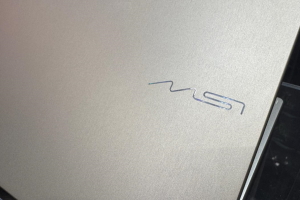Intel Core i7-8700K, i5-8600K e i5-8400: è tempo di Coffee Lake

Sono in vendita da quest'oggi i primi processori Intel della famiglia Core basati su architettura Coffee Lake: aumenta di 2 unità il numero di core integrati, senza però un grande impatto negativo in termini di frequenza di clock e di consumi nel confronto con le CPU Kaby Lake di precedente generazione
di Paolo Corsini pubblicato il 05 Ottobre 2017 nel canale ProcessoriIntelCoreCoffee LakeKaby Lake
Configurazione di test
Per valutare le prestazioni velocistiche delle CPU Intel Core i7 e Core i5 della famiglia Coffee Lake abbiamo eseguito la nostra tradizionale suite di test, comprendente applicazioni che sfruttano al meglio la disponibilità di un elevato numero di core come programmi che sono più dipendenti dall'efficienza dell'architettura e dalla frequenza di clock piuttosto che dal numero di core e threads.
Queste le CPU inserite a confronto:
- Intel Core i7-8700K (6C;12T;3,7GHz)
- Intel Core i5-8600K (6C;6T;3,6GHz)
- Intel Core i5-8400 (6C;6T;2,8GHz)
- Intel Core i9-7980XE (18C;36T;2,6GHz)
- Intel Core i9-7960X (16C;32T;2,8GHz)
- Intel Core i9-7900X (10C;20T;3,3GHz)
- Intel Core i8-7820X (8C;16T;3,6GHz)
- Intel Core i7-6950X (10C;20T;3GHz)
- Intel Core i7-6900K (8C;16T;3,2GHz)
- Intel Core i7-6850K (6C;12T;3,6GHz)
- Intel Core i7-6800K (6C;12T;3,4GHz)
- Intel Core i7-5960X (8C;16T;3GHz)
- Intel Core i7-7740K (4C;8T;4,3GHz)
- Intel Core i7-7700K (4C;8T;4,2GHz)
- Intel Core i5-7640K (4C;4T;4GHz)
- Intel Core i5-7600K (4C;4T;3,8GHz)
- Intel Core i5-7600 (4C;4T;3,5GHz)
- Intel Core i5-7500 (4C;4T;3,4GHz)
- Intel Core i3-7350K (2C;4T;4,2GHz)
- Intel Core i3-7300 (2C;4T;4GHz)
- Intel Core i7-6700K (4C;8T;4GHz)
- AMD Ryzen Threadripper 1950X (16C;32T;3,4GHz)
- AMD Ryzen Threadripper 1920X (12C;24T;3,5GHz)
- AMD Ryzen 7 1800X (8C;16T;3,6GHz)
- AMD Ryzen 7 1700X (8C;16T;3,4GHz)
- AMD Ryzen 7 1700 (8C;16T;3GHz)
- AMD Ryzen 5 1600X (6C;12T;3,6GHz)
- AMD Ryzen 5 1600 (6C;12T;3,2GHz)
- AMD Ryzen 5 1500X (4C;8T;3,5GHz)
- AMD Ryzen 5 1400 (4C;8T;3,2GHz)
- AMD Ryzen 3 1300X (4C;4T;3,4GHz)
- AMD Ryzen 3 1200 (4C;4T;3,1GHz)
Di seguito i restanti componenti utilizzati in questa analisi:
- Sistema operativo: Windows 10 Pro inglese
- SSD: Intel 335 240 Gbytes
- Driver video NVIDIA GeForce 378.49 WHQL
- Scheda video: NVIDIA GeForce GTX 1080 Founders Edition
- Alimentatore: CoolerMaster Silent Pro Gold 800 Watt
- Scheda madre socket TR4 : Asus ROG Zenith Extreme
- Scheda madre socket AM4: Asus Crosshead VI Hero
- Scheda madre socket LGA 2066: MSI X299 Gaming Pro Carbon AC
- Scheda madre socket LGA 2011-v3: Gigabyte GA-X99-UD3
- Scheda madre socket LGA 1151: MSI Z270 Gaming M7
- Scheda madre socket LGA 1151v2: 370 Aorus Gaming 7
- Scheda madre socket AM3+: ASRock Fatal1ty 990FX Killer
- Memoria scheda madre socket LGA 2011-v3: 4x8Gbytes DDR4-2400 (15-15-15-36 2T)
- Memoria scheda madre socket LGA 1151: 2x8Gbytes DDR4-2400 (15-15-15-36 2T)
- Memoria scheda madre socket AM4: 2x8Gbytes DDR4-2400 (15-15-15-36 2T)
- Memoria scheda madre socket AM3+: 2x8Gbytes DDR3-2133 (10-11-11-30)
Queste le applicazioni utilizzate nei test:
Povray 3.7.0
Cinebench 15
Blender 2.78 - bmw benchmark scene
Corona Benchmark 1.3
Hybrid
7-Zip 16.04 x64
Handbrake 1.0.2 - 64bit
- conversione video 4K in Full HD; H.264; fps
- conversione video 4K in Full HD; H.265; fps
Vegas Pro 14.0
PCMark 8
- Home score - conventional
- Work score - conventional
- Creative score - conventional
Ashes of the Singularity Excalation - qualità extreme DX12 - GPU focused
Civilization VI benchmark grafica - Qualità ultra, MSAA 4x
Rise of the Tomb Raider - DX 12 qualità molto alta
Deus Ex: mankind Divided - qualità molto elevata
Hitman - DX 12 qualità Ultra, SSAO on
Middle-Earth: Shadows of Mordor
Alien - qualità ultra, SMAA T2x, SSAO standard
GTA V
Tom Clancy's The Division - qualità ultra
F1 2016







 BOOX Note Air4 C è uno spettacolo: il tablet E Ink con Android per lettura e scrittura
BOOX Note Air4 C è uno spettacolo: il tablet E Ink con Android per lettura e scrittura Recensione Sony Xperia 1 VII: lo smartphone per gli appassionati di fotografia
Recensione Sony Xperia 1 VII: lo smartphone per gli appassionati di fotografia Attenti a Poco F7: può essere il best buy del 2025. Recensione
Attenti a Poco F7: può essere il best buy del 2025. Recensione DJI OSMO Mobile SE a 69€: il gimbal compatto che trasforma i video dello smartphone in riprese da pro
DJI OSMO Mobile SE a 69€: il gimbal compatto che trasforma i video dello smartphone in riprese da pro Scope elettriche da record su Amazon: due modelli potentissimi sotto i 120€, ecco perché piacciono così tanto
Scope elettriche da record su Amazon: due modelli potentissimi sotto i 120€, ecco perché piacciono così tanto GTA 6 a 80 euro? Take-Two frena sul prezzo e punta tutto sul valore percepito
GTA 6 a 80 euro? Take-Two frena sul prezzo e punta tutto sul valore percepito I 3 portatili più convenienti su Amazon: sono 2 tuttofare Lenovo e un HP Victus gaming con RTX 5060
I 3 portatili più convenienti su Amazon: sono 2 tuttofare Lenovo e un HP Victus gaming con RTX 5060 AirPods Pro 2 a soli 199€: su Amazon anche AirPods 4 in sconto, ecco le differenze che contano
AirPods Pro 2 a soli 199€: su Amazon anche AirPods 4 in sconto, ecco le differenze che contano 2 Smart TV 4K Hisense con doppio sconto su Amazon: sono OLED e QLED, 55" e 75", fateci un bel pensierino
2 Smart TV 4K Hisense con doppio sconto su Amazon: sono OLED e QLED, 55" e 75", fateci un bel pensierino Portatili Apple ai minimi: MacBook Pro con chip M4 a 1.648€ e Macbook Air 13 16GB7256GB, sempre M4, a 998€
Portatili Apple ai minimi: MacBook Pro con chip M4 a 1.648€ e Macbook Air 13 16GB7256GB, sempre M4, a 998€ Come mantenere Windows 10 sicuro dopo il 2025: tutto sul programma ESU
Come mantenere Windows 10 sicuro dopo il 2025: tutto sul programma ESU Finalmente è tornato su Amazon l'iPhone 16 128GB a 749€, in tutti i colori, ma ci sono anche i 16e e 16 Pro in offerta
Finalmente è tornato su Amazon l'iPhone 16 128GB a 749€, in tutti i colori, ma ci sono anche i 16e e 16 Pro in offerta Auto nuove? Per il 65% degli italiani sono troppo care, non dovrebbero costare oltre i 20.000 euro
Auto nuove? Per il 65% degli italiani sono troppo care, non dovrebbero costare oltre i 20.000 euro Droni solari Airbus volano nella stratosfera grazie alle nuove batterie al silicio: test riusciti a oltre 20 km di quota
Droni solari Airbus volano nella stratosfera grazie alle nuove batterie al silicio: test riusciti a oltre 20 km di quota Colpo da 15 milioni di dollari: chi ha rubato un carico di prodotti AMD e Apple?
Colpo da 15 milioni di dollari: chi ha rubato un carico di prodotti AMD e Apple? Elon Musk lancia l'allarme su GPT-5: 'OpenAI divorerà Microsoft'. Ma Nadella lo sfida con un sorriso
Elon Musk lancia l'allarme su GPT-5: 'OpenAI divorerà Microsoft'. Ma Nadella lo sfida con un sorriso iPhone 17 Pro sarà più costoso, ma anche più conveniente
iPhone 17 Pro sarà più costoso, ma anche più conveniente



















